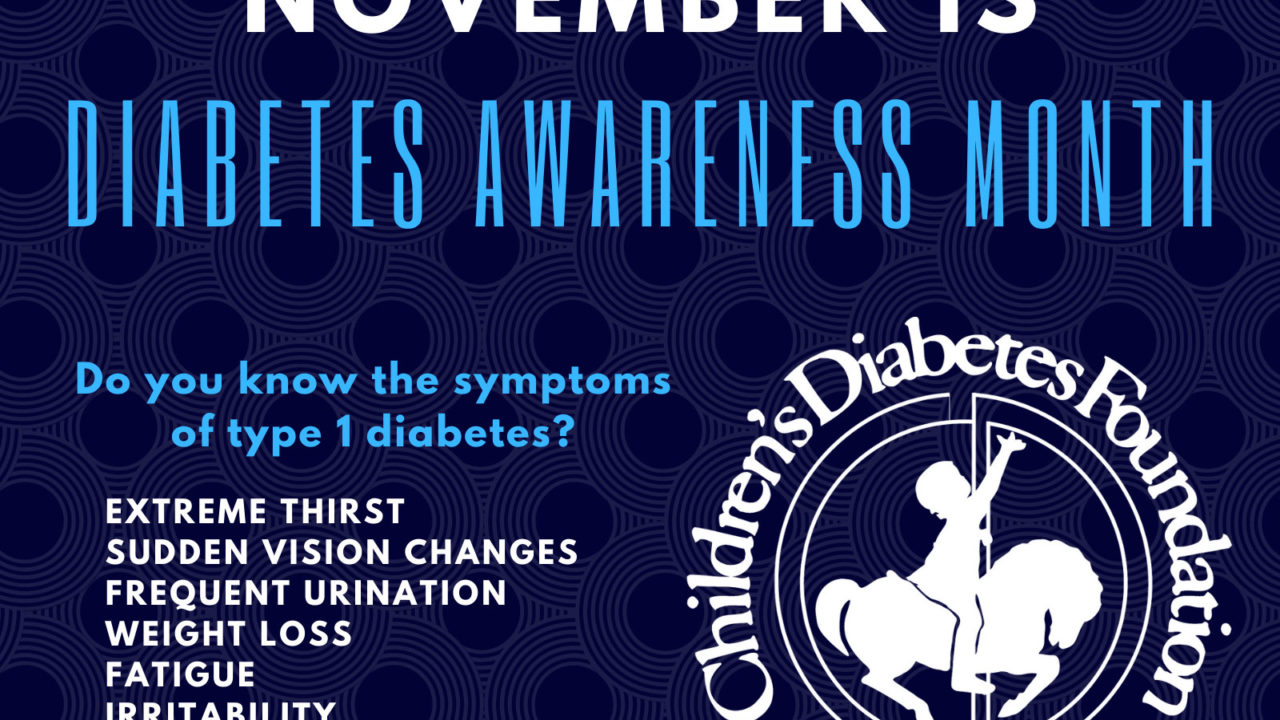There is No Cure for Type 1 Diabetes. You Can Change That.
More than 30 million Americans, or roughly 9.4% of your friends, neighbors, coworkers, or family members are living with diabetes, which means you probably know someone with the disease. But do you know what life with diabetes actually looks like? Or that there are multiple types with big differences?

November is Diabetes Awareness Month, so all month long the Children’s Diabetes Foundation is debunking the myths about type 1 diabetes.
The facts may surprise you…
Type 1 diabetes is NOT caused by eating too much sugar or not exercising
Approximately 1.25 million Americans have type 1 diabetes, an autoimmune disease, which means the person did nothing to cause their diagnosis. Their body stopped producing insulin, which regulates the amount of sugar in the blood. Many type 1s rely on Continuous Glucose Monitors (CGMs) and insulin pumps or frequent injections to maintain the delicate balancing act your body performs naturally.

The exact cause of the disease is still unknown, but research at the Barbara Davis Center here in Denver, supported by the Children’s Diabetes Foundation is looking for answers. Some factors may be genetic, or some may be environmental. As we learn more, we get one step closer to finding a cure.
Diabetes can be diagnosed at ANY age
Type 1 diabetes used to be called childhood or juvenile diabetes. This changed years ago because doctors and researchers have learned that a diagnosis can happen at any age, from infants to seniors. Fifty percent of people diagnosed today are over 18 years old.
Type 1 diabetes can NOT be cured by diet or exercise
There is no cure yet for type 1 diabetes. Researchers continue to do stem cell research in hopes of finding a cure for the millions of people living with type 1 diabetes. But as a chronic autoimmune disease, we know it’s not something that can be cured by a change in diet or new exercise regimen.

Yes, people with type 1 diabetes CAN eat sugar
And sometimes they need to eat or drink something sugary to stay alive. When blood sugars are too low, a type 1 must eat something to raise their blood sugar to avoid going unconscious, having a seizure, or even death.
Catching a diagnosis early can be the difference between life and death
Be on the lookout for these symptoms:
- Extreme Thirst
- Frequent Urination
- Bedwetting
- Weight Loss
- Fatigue
- Irritability
- Sudden Vision Changes
We need your help to spread the word
Wear a blue shirt this November, the color of diabetes awareness, to help us spread the word. When someone asks you about it, share what you’ve learned here and invite them to visit ChildrensDiabetesFoundation.org to learn more. The more we know and talk about type 1 diabetes, the better allies we can all be in this fight.
The Children’s Diabetes Foundation is the fundraising arm of the Barbara Davis Center (BDC), one of the largest type 1 diabetes centers in the world. Donations directly support the BDC clinics, research, and programs. No one is turned away for care at the BDC. In fact, 40% of patients are uninsured or underinsured. The Children’s Diabetes Foundation also has programs for education and awareness, support groups, financial support for type 1 families, an Advocate program, and more.
With Colorado Gives Day just around the corner on December 10th, we would love to have your support. Schedule your donation today at ColoradoGives.org/CDF.




